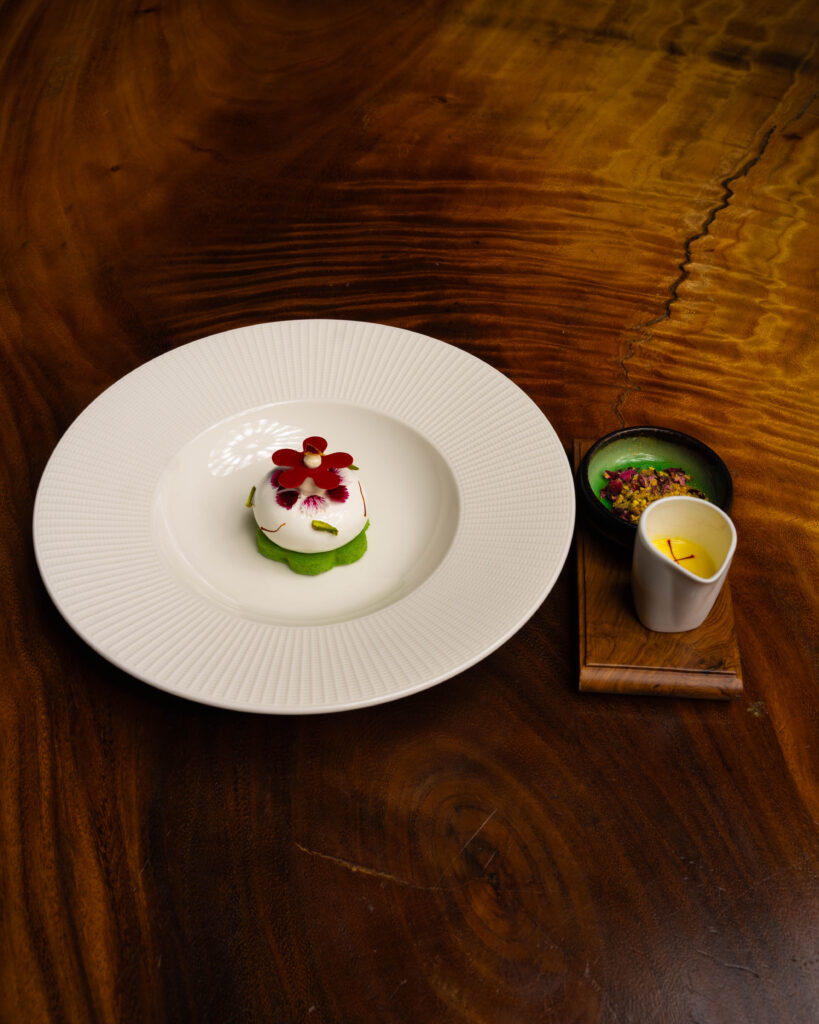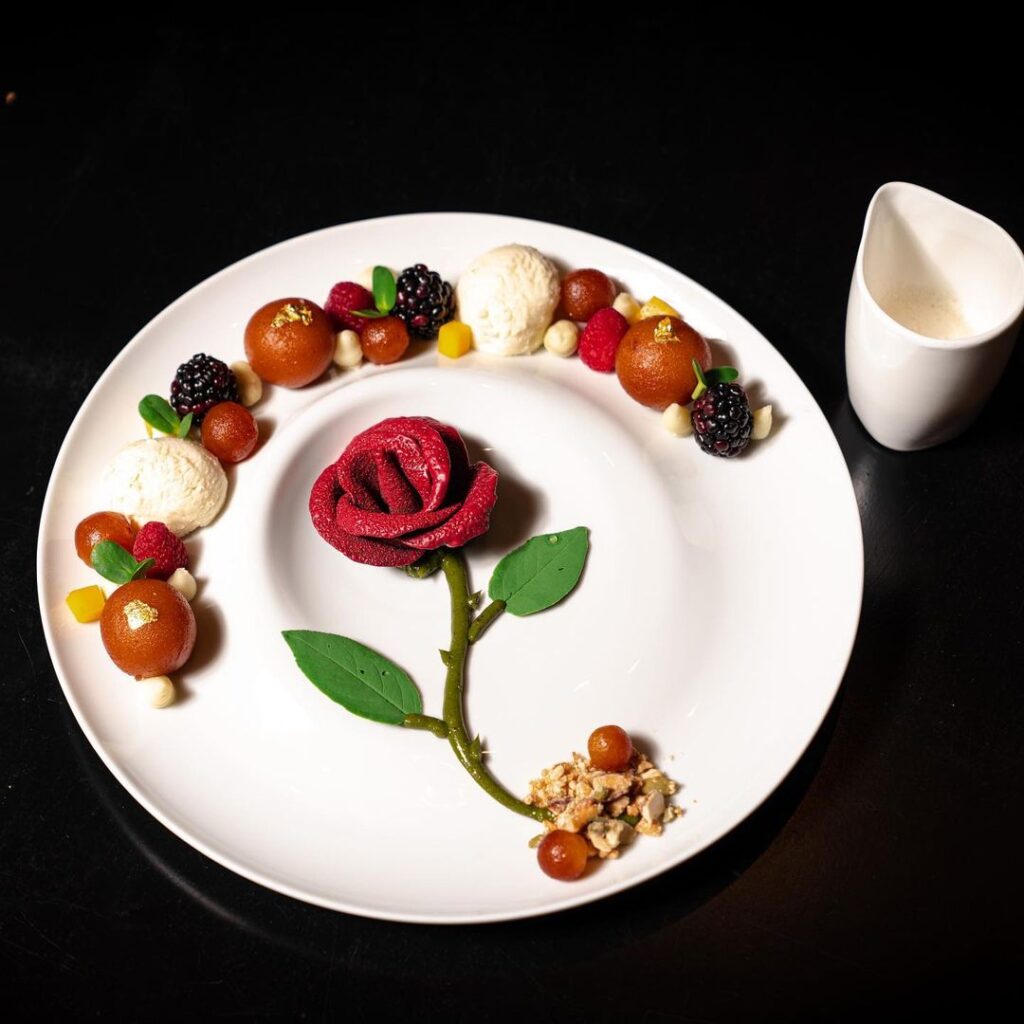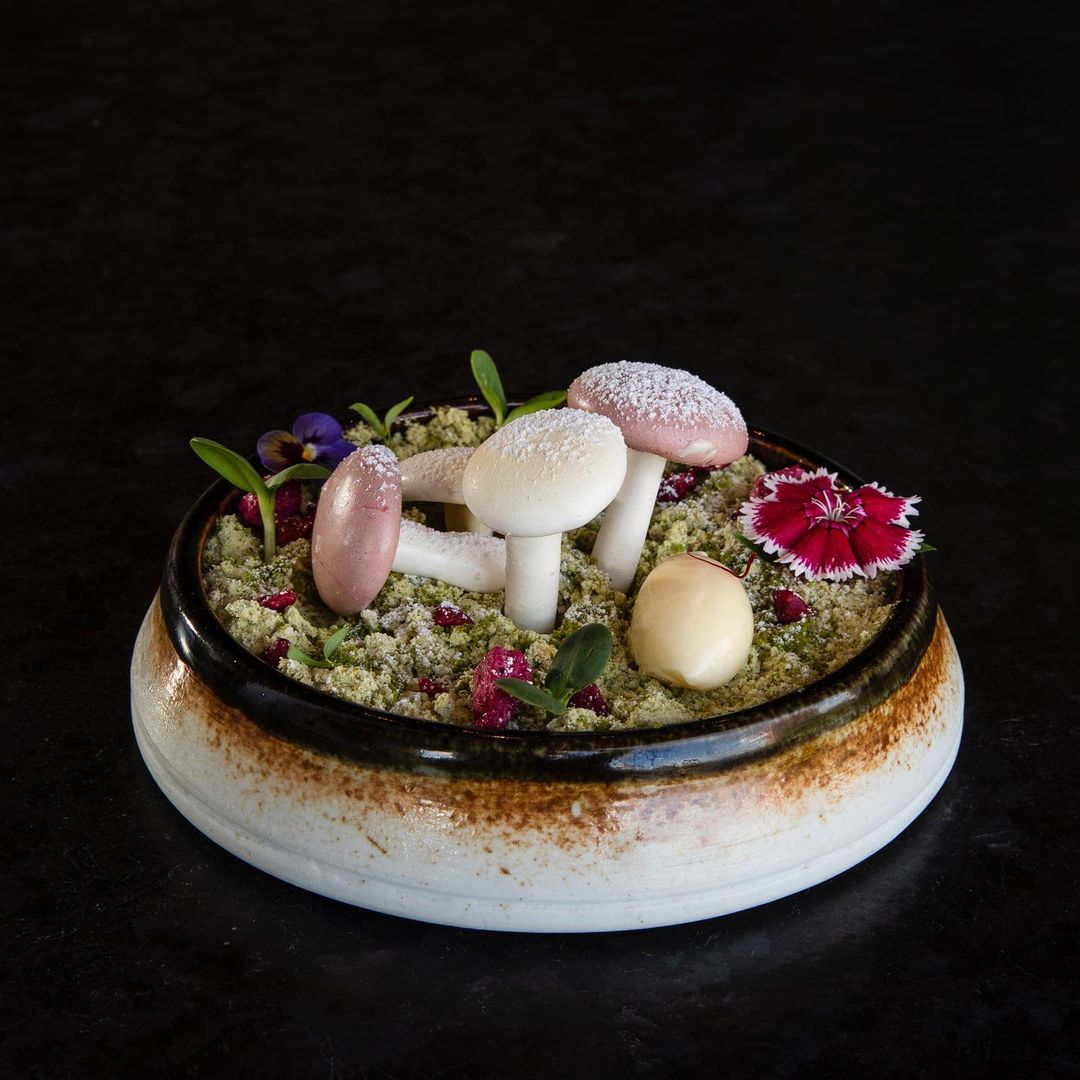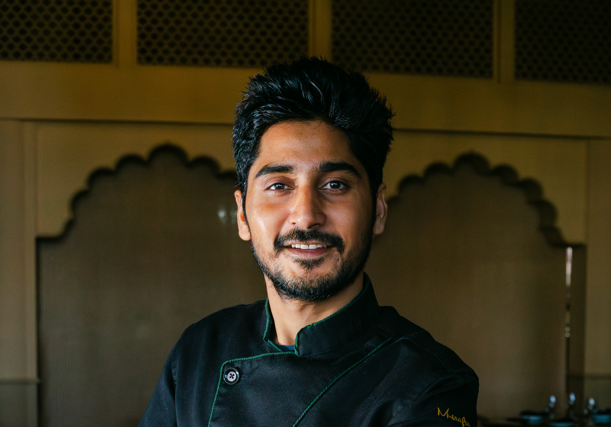Chef Sumant Sharma is the Executive Pastry Chef of Musaafer in Houston, Texas and NYC. He was one of the 4 incredible finalists in our 2025 LA Chef Con Center Stage competition! We recently interviewed heim to learn a little bit more about his culinary journey. Read the full interview below and don’t forget to follow him on Instagram!
Can you share a bit about your culinary journey to this point?
I was born into a humble farming family in Rajasthan, India, where the rhythm of life was guided by the soil, the seasons, and the harvest. That connection to the land gave me an early appreciation for ingredients—not just as food, but as living expressions of culture and nature. In school, I originally pursued biology with the dream of becoming a doctor, but life redirected me. I entered hotel management, overcame language barriers, and graduated at the top of my batch.
My career began with the Taj, Marriott and itc , where I was immersed in the artistry of Indian hospitality and traditional sweets. Later, I worked across Singapore and the Middle East, contributing to luxury hotel openings while sharpening my craft in both classical and modern pastry. The true turning point came in 2019 when I joined Musaafer Houston by the spice rout co. It was here that I discovered my true calling: to reimagine Indian pastry as a sophisticated art form that could stand proudly on the global stage. Today, as a Pastry Chef at Musaafer Houston and Musaafer New York, I carry forward India’s centuries-old traditions while blending them with modern innovation, wellness, and storytelling.

What initially inspired you to start working in pastry?
I am deeply thankful to my birthplace in the Braj region of India—the holy land of Lord Krishna—renowned for its lyrical language and its extraordinary tradition of sweets. Each city tells its story through confections: Khajla from Bharatpur, Peda from Mathura, Petha from Agra, Milk Cake from Alwar , and many more. I am equally grateful to my parents, whose values and encouragement nurtured my curiosity and creativity from an early age.
When I was in 9th grade, there was a sweet shop just across from my school. During recess, I would often stand outside, captivated by the halwai (sweet maker) as he shaped milk, sugar, and ghee into gulab jamuns, jalebis, and laddus. I didn’t always have the pocket money to taste them, but that didn’t stop me from learning. I began training my senses—watching the colors, breathing in the aromas, listening to the sizzle of syrup, and imagining the textures. Those moments taught me that sweets are not just confections; they are crafted experiences.
Years later, when I pursued hotel management, that fascination grew into a mission. I realized that while French pastry was celebrated globally for its finesse, Indian confections were often dismissed as overly sweet or heavy. This felt unfair because, at their core, Indian sweets carry centuries of innovation—sugar aeration, milk foaming, spice layering—all of which predate modern pastry science. Pastry became my language to challenge that narrative. It became my way to honor the Halwai(Indian sweet maker) I once stood admiring while showing the world that Indian sweets can be refined, elegant, and even health-conscious without losing their soul. For me, pastry is not just about taste, it is about memory, nostalgia, and storytelling. Each creation asks the question: How can I make someone feel the comfort of home while introducing them to something entirely new?

How do you approach menu development, and what influences your culinary creations?
My process begins by mapping out the year’s menu around events, seasons, and special occasions. From there, I draw inspiration from diverse sources—nature, places, culture, traditions, art, music, or even life experiences. Once the idea takes shape, I sketch it and check with my wife who always help me in initial design and , then I move into trials until the concept becomes a finished creation. At Musaafer, every dessert is built on this foundation of creativity, research, and transformation. My approach to menu development is guided by three core principles: Recreation, Incorporation, and
Well-being.
Recreation: I reinterpret traditional sweets with modern textures and techniques by creating my own recipes. For example, transforming shrikhand into a frozen yogurt ice cream, converting chocolate into a rose that becomes a sauce, crafting chenna sponge, reimagining gajak (sesame seed brittle) as a cremeux, or turning carrot halwa into a shortcake.
Incorporation: I integrate global pastry techniques with Indian flavors to create a dialogue between cultures. A paan-infused Callebaut white chocolate or a Californian cantaloupe sorbet spiced with Indian summer honey and chaat masala are examples of how I bridge traditions while also celebrating local and sustainable resources.
Well-being: Inspired by Ayurveda, I design desserts that balance indulgence with health. Spices such as cardamom, fennel, nutmeg, and turmeric, along with superfoods like moringa, foxnut, and bee pollen, enhance not only the flavor profile but also the wellness aspect of each creation. Inspiration flows endlessly—from my farming roots and the rhythm of seasonal local produce to forgotten Indian traditions and the interplay between science and spirituality. To me, a menu is not just a collection of dishes, it is a living narrative where every dessert carries meaning, memory, and purpose.

Musaafer recently opened a new location in New York. What has been the most exciting part of being involved in this project and what can diners expect?
Opening Musaafer New York has been a milestone in my career, as it gives us the opportunity to share India’s culinary artistry on one of the world’s most diverse and discerning stages. In Houston, we introduced diners to the incredible breadth of regional Indian cuisine. In New York, we now have the chance to take that philosophy further—challenging stereotypes, pushing creativity, and presenting an entirely neoteric approach to Indian dining.
For the pastry program, my mission is to introduce New Yorkers to a modern Indian pastry philosophy that revolves around health, balance, and well-being. The desserts are consciously lighter, with reduced refined sugar, and instead highlight natural sweeteners like jaggery, honey, Nolen gur, and molasses. They are enriched with superfoods, Ayurvedic herbs, and healing spices, making them nourish as well as indulgent.
Imagine savoring a saffron-infused Makhan malai that recalls misty winter mornings in Lucknow, or tasting a Rajasthan-inspired Gaund laddu that bridges ancient Ayurveda with contemporary finesse. In Indian tradition, sweets are considered the final blessing at the end of a meal, and at Musaafer New York, I want every dessert to carry that same spiritual resonance—leaving diners not just satisfied, but with a sense of gratitude, joy, and discovery.

What is a culinary goal you have for the future?
As the Pastry Chef at The Spice Route Co., my dream is to see myself as a trailblazer to new era of Indian sweets and confection, which is recognized globally on the same level as French or Japanese pastry. I want the world to understand that mithai is not just sugar—it is technique, tradition, artistry, and timeless beauty.
My long-term vision is to establish a pastry school or atelier dedicated exclusively to Indian confections, where future chefs can learn not just recipes, but the philosophy, history, and science behind them. I am deeply grateful to our CEO, Mrs. Mitthu Malik, and concept director Mr. Shammi Malik who continually inspires and supports me in keeping our neoteric Indian pastry program innovative, creative, and future-focused. Their belief in this mission gives me strength to dream bigger and work harder.
I also aspire to showcase this journey of connecting ancient Indian methods like slow churning, spice layering, and milk transformation with modern pastry science. More immediately, my goal is to continue crafting desserts that surprise, heal, and inspire—because for me, every plate I serve is not just a dish, but an opportunity to create memory, meaning, and joy.

Tell us a bit about your healthy chocolate philosophy in regards to Ayurveda!
In this regard, I often turn to my parents and my two brothers, both of whom have a science background—for guidance. They have a deep knowledge of home remedies rooted in Ayurvedic science and help me understand the nature of ingredients, their applications, seasonal properties, and their effects on the body. For me, chocolate is both indulgence and medicine—it is joy, but also balance. Through Ayurveda, I see chocolate as a functional food that can harmonize the body’s doshas (vata, pitta, kapha).
I like to infuse chocolate with spices such as cardamom for digestion, fennel for cooling, or black pepper for warmth. Superfoods like turmeric, moringa, and bee pollen add not just flavor but healing properties. With the guidance of Chef Mayank, I explore ways to make indulgence smarter and more meaningful. Imagine a dark chocolate praline enriched with turmeric and honey to reduce inflammation, or a white chocolate infused with paan for freshness and digestive comfort.
I also focus on reducing refined sugar, leaning instead on natural sweeteners and thoughtful pairings that allow cacao to shine while remaining light on the body. My philosophy is simple: chocolate should not only delight the senses, but also nourish—leaving you feeling better than when you began.

Photos courtesy of @raydoncreative


